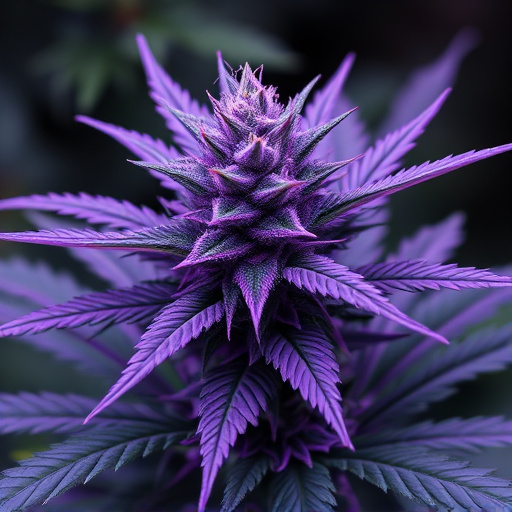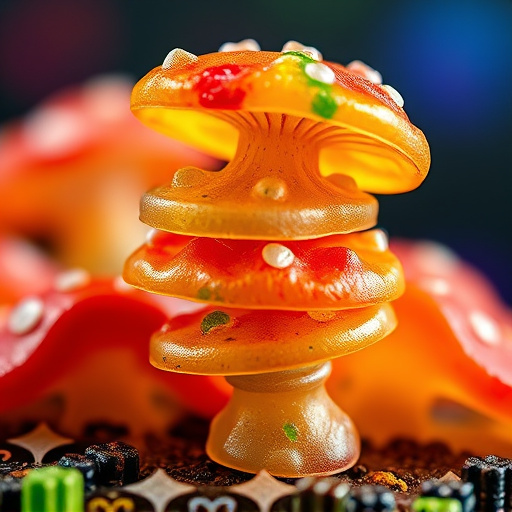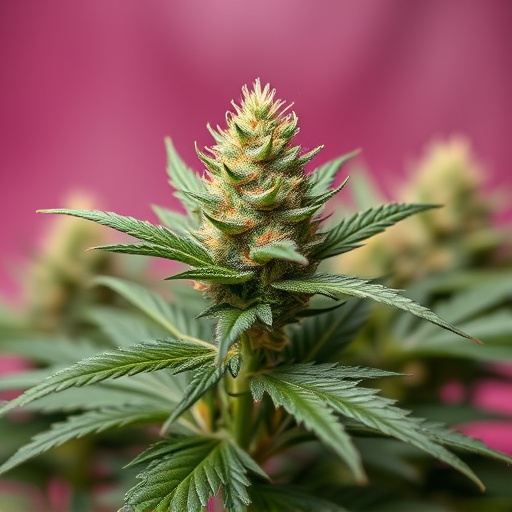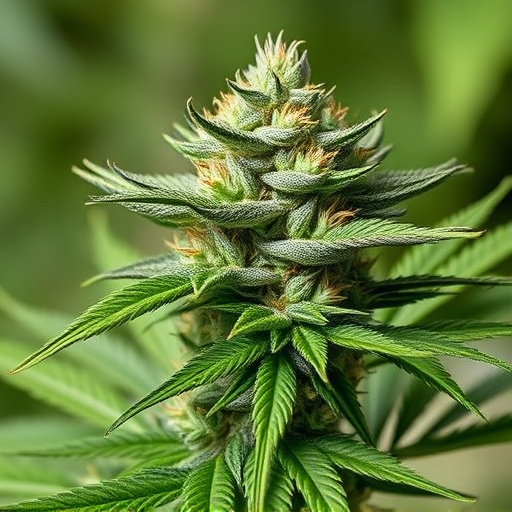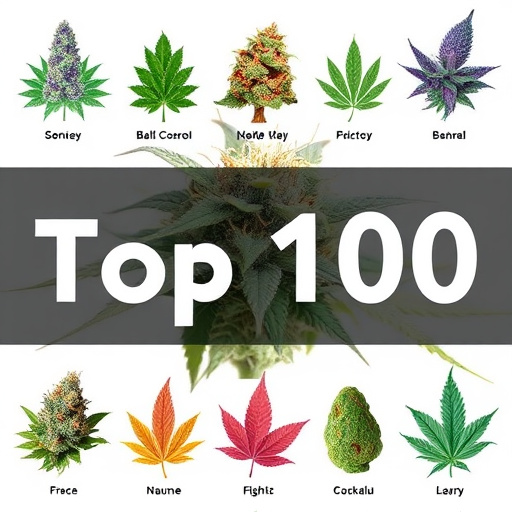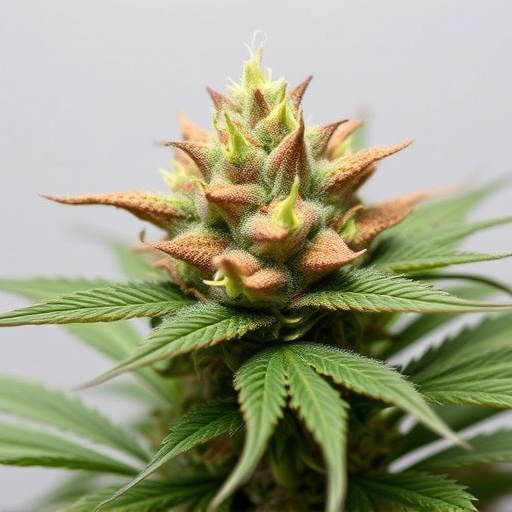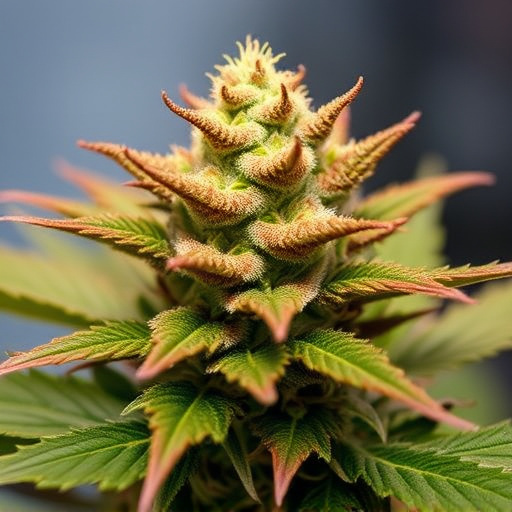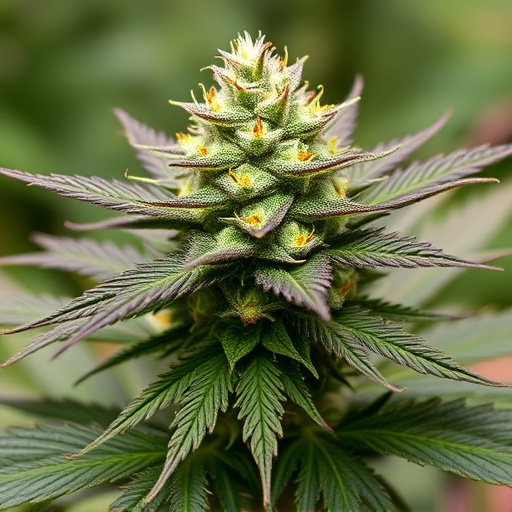Cannabis stimulates appetite through its interaction with the endocannabinoid system (ECS), with THC triggering ECS receptors in the brain's reward centers, leading to increased hunger. Among the top 100 cannabis strains known for their appetite-stimulating properties, those with higher THC content are most effective, though balanced strains with both THC and CBD can boost appetite without mental impairment. Exploring different cannabinoid profiles within these top strains aids in managing appetite issues, be it medically or for sudden cravings.
Cannabis has long been recognized for its ability to stimulate appetite, making it a valuable tool for managing conditions like anorexia and weight loss. But how does it work? This article delves into the science behind cannabis and its interaction with the endocannabinoid system, exploring key cannabinoids like THC and CBD and their roles in enhancing hunger. We present a comprehensive guide to the top 100 cannabis strains known for inducing appetite, offering insights into sativa, indica, and hybrid varieties. Additionally, we provide tips on dosage and consumption methods to maximize its effectiveness while minimizing potential side effects.
- Understanding Cannabis and Appetite Stimulation
- – The science behind cannabis and its interaction with the endocannabinoid system
- – Key cannabinoids (THC, CBD) and their roles in appetite enhancement
Understanding Cannabis and Appetite Stimulation
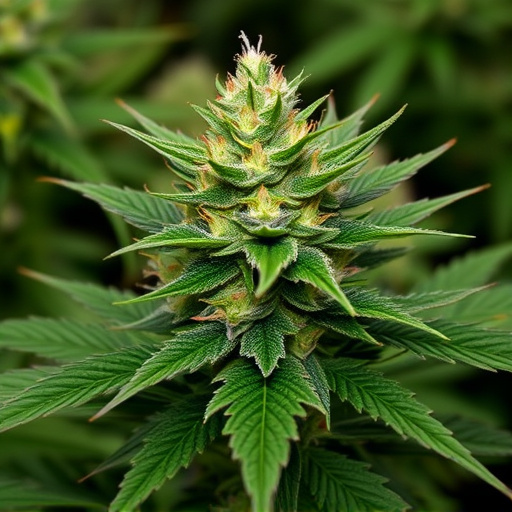
Cannabis has long been known for its impact on appetite, a phenomenon that goes beyond casual snacking after a smoke session. Understanding this effect involves delving into how cannabis interacts with our bodies, particularly the endocannabinoid system (ECS), which regulates hunger and various other bodily functions. This system includes receptors in the brain and throughout the body that bind to cannabinoids, the active compounds in cannabis, including tetrahydrocannabinol (THC) and cannabidiol (CBD).
Among the top 100 cannabis strains known for their appetite-stimulating properties are those with higher THC content. THC is primarily responsible for cannabis’ psychoactive effects but also triggers ECS receptors to increase hunger. Strains with a balance of THC and CBD, however, can offer an appetite boost without the mental impairment associated with pure THC. Exploring different strains and their unique cannabinoid profiles can help individuals find the right fit for managing appetite-related issues, whether it’s for medical reasons or simply to satisfy those sudden cravings.
– The science behind cannabis and its interaction with the endocannabinoid system
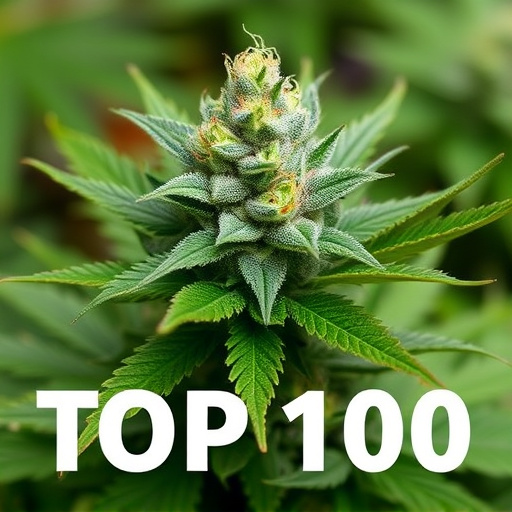
The science behind cannabis and its interaction with the endocannabinoid system provides a compelling explanation for why it can stimulate appetite. The plant contains compounds called cannabinoids, most notably THC (tetrahydrocannabinol) and CBD (cannabidiol), which bind to specific receptors in our bodies. These receptors are part of the endocannabinoid system (ECS), playing a crucial role in maintaining homeostasis, or balance, within our bodies. When cannabis is consumed, these cannabinoids interact with the ECS, influencing various physiological processes, including hunger and metabolism.
Research suggests that THC, in particular, binds to the CB1 receptors in the brain’s reward centers, activating appetite-stimulating pathways. This activation can lead to increased hunger and cravings, often referred as the “munchies.” Interestingly, not all cannabis strains exhibit this effect equally; the top 100 cannabis strains vary in their cannabinoid profiles, with some being known for their higher THC content and others for their balance of THC and CBD. This variation highlights the importance of strain selection when aiming to manage or enhance appetite using cannabis products.
– Key cannabinoids (THC, CBD) and their roles in appetite enhancement
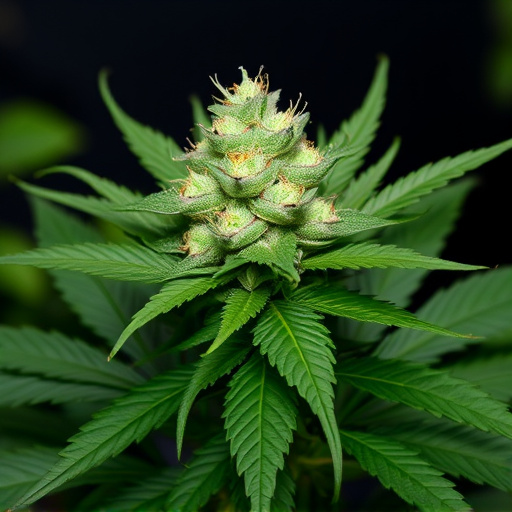
Cannabis flower’s ability to stimulate appetite is attributed to its key cannabinoids, tetrahydrocannabinol (THC) and cannabidiol (CBD). THC, renowned for its psychoactive effects, also plays a pivotal role in enhancing appetite. It binds to cannabinoid receptors in the brain, particularly those involved in regulating hunger and pleasure. This interaction can lead to an increased desire to eat, often described as the “munchies.” Interestingly, the impact of THC on appetite is not universally pleasurable; it may vary based on individual tolerance and consumption methods.
On the other hand, CBD, known for its non-intoxicating properties, also contributes to this effect. Research suggests that CBD interacts with the endocannabinoid system in a more subtle way than THC, potentially modulating appetite by influencing hormones like leptin and ghrelin. This interaction is particularly interesting as it hints at CBD’s potential in treating conditions marked by appetite loss or dysregulation, such as those experienced during cancer treatment or certain neurological disorders. Exploring these cannabinoids and their complex relationship with our bodies’ natural hunger cues offers insights into the science behind cannabis’ effects on appetite and paves the way for further research in this area, especially among the top 100 cannabis strains known for their distinct cannabinoid profiles.
Cannabis’ impact on hunger is a fascinating aspect of its complex interplay with our bodies. The key cannabinoids, notably THC, found in the top 100 cannabis strains, interact with the endocannabinoid system, leading to appetite stimulation. This effect has been well-documented, offering potential relief for conditions like anorexia and weight loss. Understanding this mechanism not only satisfies curiosity but also opens doors to new research on cannabis’ therapeutic applications beyond its psychological effects.


